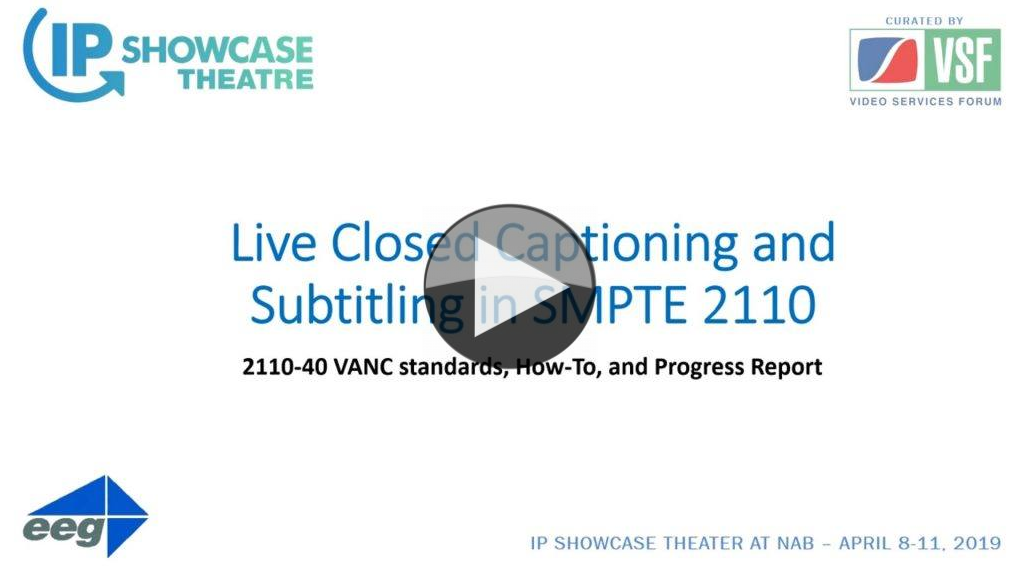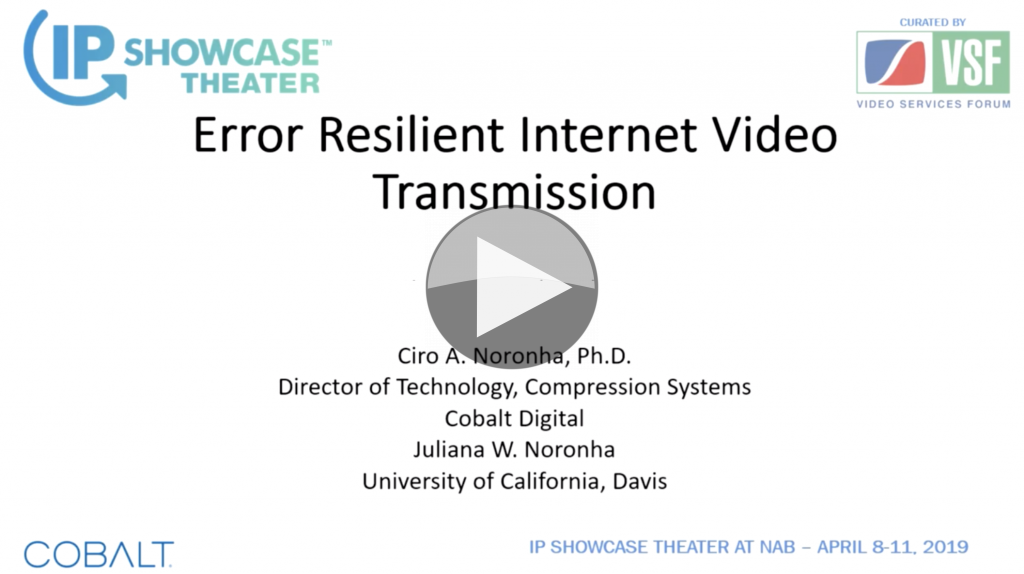
The ST 2110-40 standard specifies the real-time, RTP transport of SMPTE ST 291-1 Ancillary Data packets. It allows to create IP essence flow carrying VANC data known from SDI (like AFD, closed captions or triggering), complementing the existing video and audio portions of the SMPTE ST 2110 suite.
In this video, Bill McLaughlin introduces 2110-40 and shows its advantages for closed captioning. With video, audio and ancillary data broken into separate essence flows, you no longer need full SDI bandwidth to process closed captioning and transcription can be done by subscribing to a single audio stream which bandwith is less than 1 Mbps. That allows for a very high processing density, with up to 100 channels of closed captioning in 1 RU server.
Another benefit is that a single ST 2110-40 multicast containing closed captioning can be associated with multiple videos (e.g. for two different networks or dirty and clean feeds), typically using NMOS connection management. This translates into additional bandwidth savings and lower cost, as you don’t need separate CC/Subtitling encoders working in SDI domain.
Test and measurment equipment for ST 2110-40 is still under developmnent. However, with date rates of 50-100 kbps per flow monitoring is very managable and you can use COTS equipment and generic packet analyser like Wireshark with dissector available on Github.
Speaker
 |
Bill McLaughlin
VP Product Development
EEG Enterprises |









